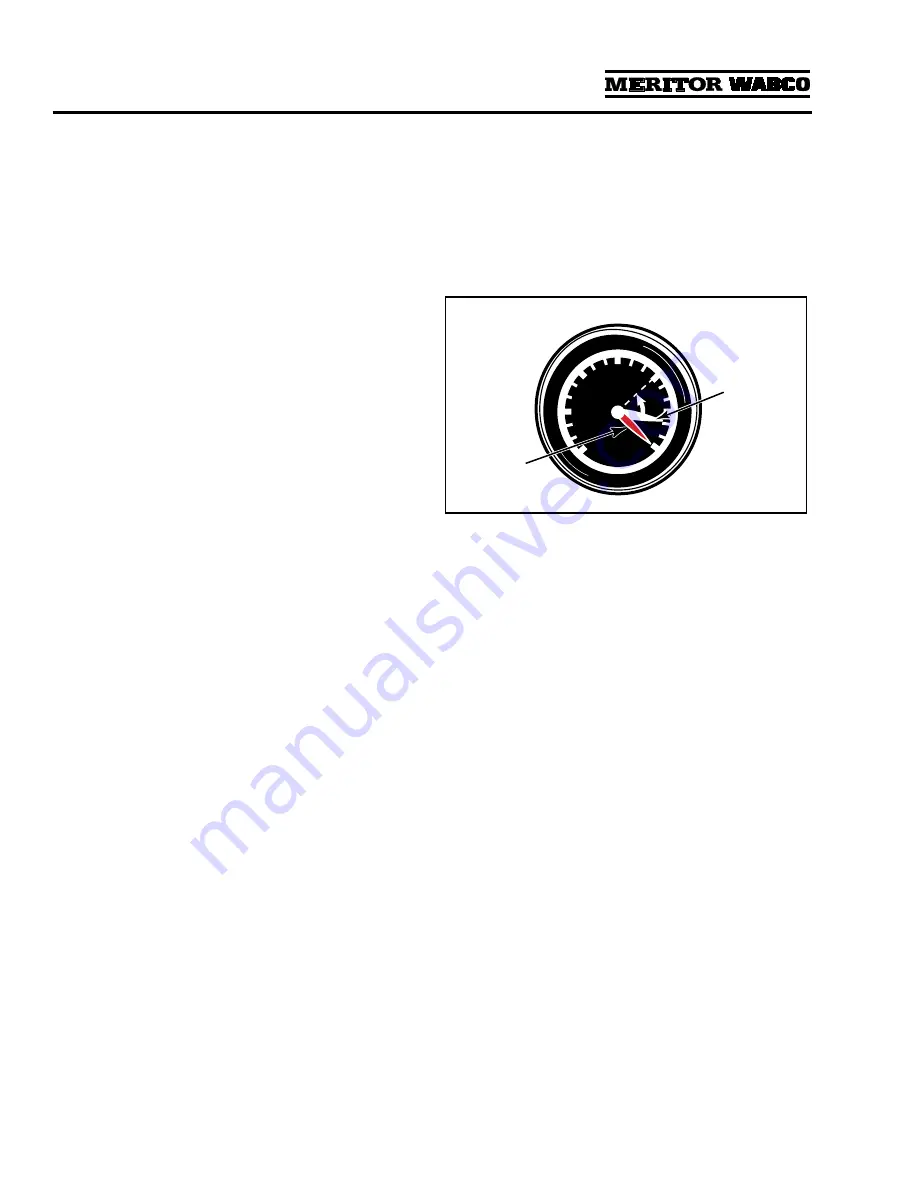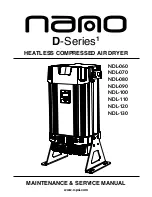
Section 2
Troubleshooting & Testing
MM-34
Page 14
Revised 11-02
2.
During the regeneration cycle, which lasts
from 10-25 seconds, supply and secondary
tanks will drop approximately 10 psi in
pressure. Check the secondary air gauge on
the vehicle dash panel to
verify this drop
.
NOTE:
A 10 psi drop in pressure in the
secondary air system is normal for Meritor
WABCO System Saver Series regeneration
style air dryers. There should be no visible
pressure drop for P Series dryers. If there is a
visible pressure drop (P Series dryer), perform
a check valve leak test on the system check
valves.
Step 3 applies to regeneration style air dryers only.
3.
If there is no drop in pressure, one of the
following conditions may apply:
O
Pressure-controlled check valve not
installed, or installed on wrong air tank.
O
Pressure-controlled check valve installed to
a one-way check valve, instead of
in place of
a one-way check valve.
O
There is another check valve located
between the air dryer and the secondary air
tank, usually at the supply tank.
O
Secondary air gauge not plumbed to the
secondary air system. Use a calibrated air
gauge in the secondary tank to check air
pressure.
— Make the necessary installation changes
or repairs and repeat the operational test.
O
If the secondary pressure drops 25 psi or
more during the regeneration cycle — and
there are no other air-operated components
using air during this cycle — there are air
leaks or other air system problems.
— Identify and repair all air leaks and air
system problems.
— Clean the Regeneration and Outlet Check
valves.
— Disconnect the compressor line from the
air dryer (Dryer Port 4). Check the
compressor and governor per the
manufacturer’s recommendation.
Pressure-Controlled Check Valve
Test — Regeneration Style Only
1.
Turn off the engine after the air system reaches
cut-out pressure (approximately
120 psi) and the air compressor has unloaded.
2.
Drain the supply tank down to 80 psi or lower.
3.
Check the secondary tank air gauge. It should
read 95 ± 5 psi.
NOTE:
A drop from 120 to 95 ± 5 psi during
this test is normal for vehicles equipped with
the System Saver Series air dryer and a
pressure-controlled check valve.
4.
If the secondary tank air gauge reading is less
than 90 psi:
O
Pressure-controlled check valve may be
installed backwards (arrow on valve must
point toward host reservoir). Make
necessary corrections and retest.
O
Check for leaks in the secondary air system.
Identify and repair any leaks.
5.
If the secondary tank air gauge reading does
not change — or the reading does not drop
below 100 psi:
O
Pressure-controlled check valve not
installed, or installed on wrong air tank.
O
Pressure-controlled check valve installed
TO
a one-way check valve, rather than
IN PLACE
OF
a one-way check valve.
O
There is another check valve located
between the air dryer and the secondary air
tank, usually at the supply tank.
O
Secondary air gauge not plumbed to the
secondary air system. Use a calibrated air
gauge in the secondary tank to check air
pressure.
— Make the necessary installation changes
or repairs and repeat the operational
test.
Figure 2.4
PSI
20
40
60
80
95
110
120
1002162a
Primary
Air Supply
(Red)
Secondary
Air Supply
(White)
















































